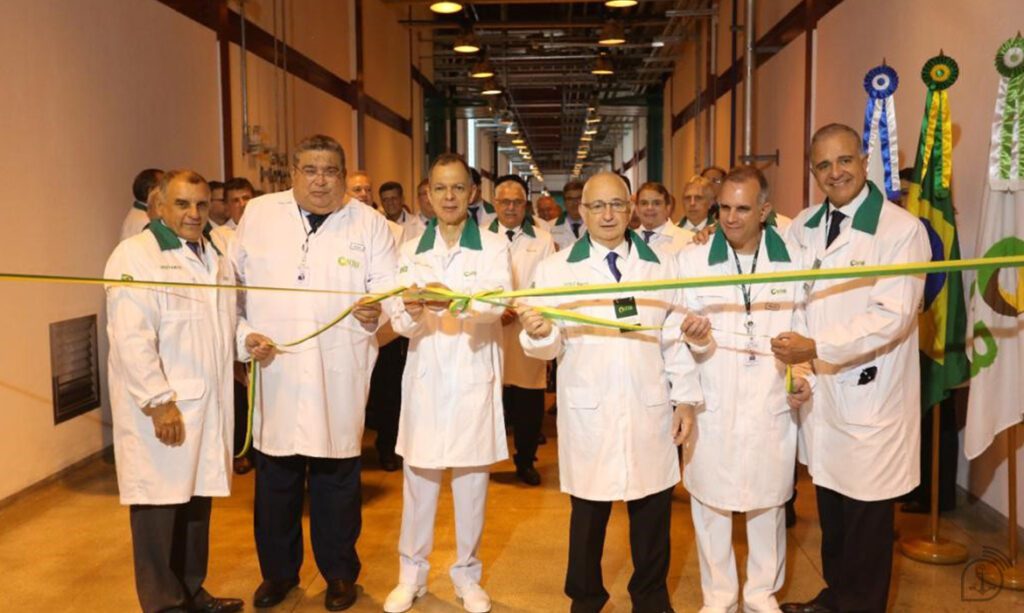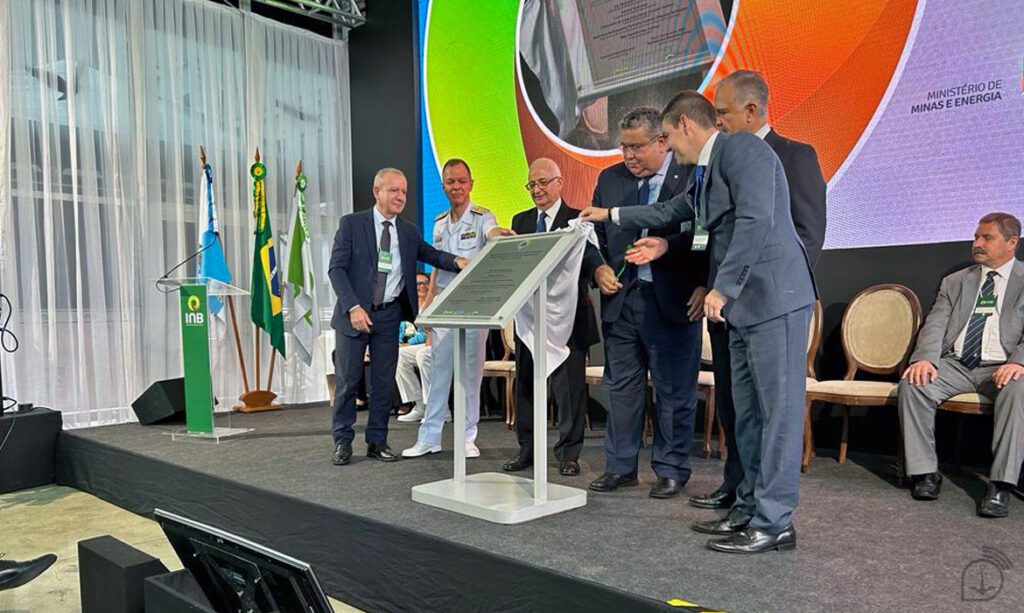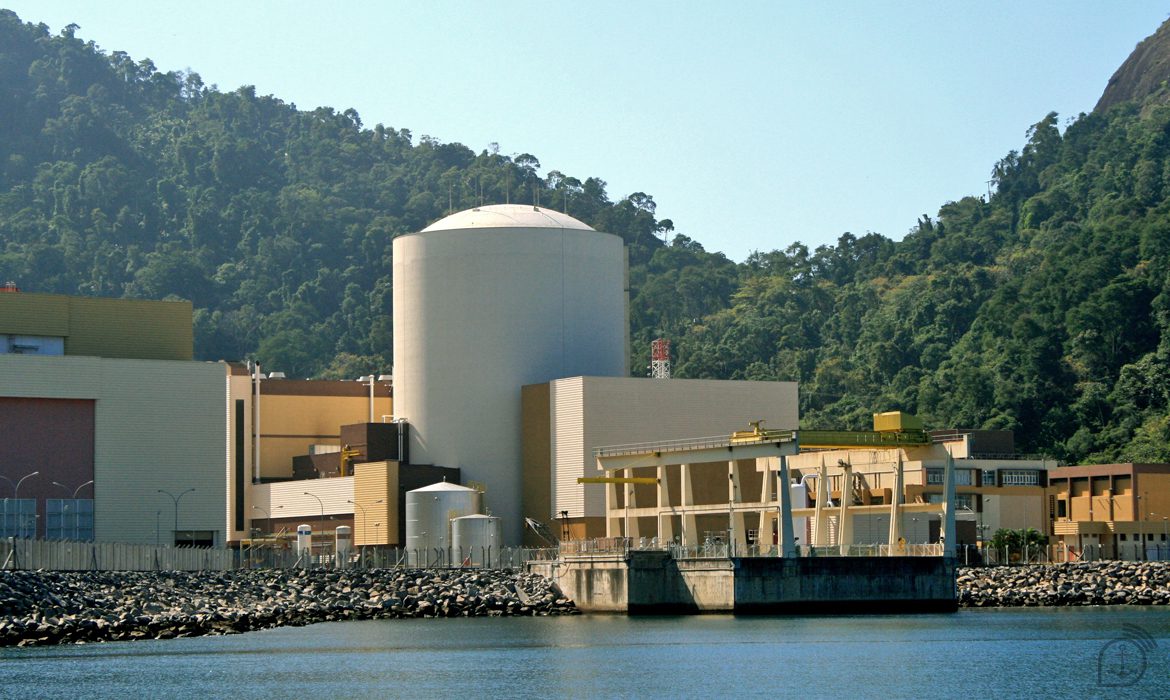The completion of the first phase of the Uranium Enrichment Plant favors the nationalization of the sector and reduces the country’s degree of dependence
By Lieutenant-Captain (T) Bruno Braga Britto de Oliveira – Rio de Janeiro, RJ
The growth of the world population requires an increasing investment in clean and affordable energy, as is the case of nuclear energy. And Brazil is one of the global protagonists when the subject is uranium enrichment and, with the participation of the Brazilian Navy, is contributing to the country’s mastery of the nuclear fuel cycle. This initiative has been favoring the generation of electric energy at the Nuclear Power Plants in Angra dos Reis, in Rio de Janeiro, benefiting Brazilian society in several sectors. According to the World Nuclear Association, Brazil is part of a group of 13 countries internationally recognized by the nuclear sector as holders of uranium enrichment facilities with different industrial production capacities.
The completion of the first phase of the Uranium Enrichment Plant, last November 25th, in Resende (RJ), is considered a milestone for the Brazilian Nuclear Sector since its expansion will reduce the degree of dependence on contracting isotopic enrichment services abroad for the production of fuel for the national nuclear plants. On the occasion, the 10th ultracentrifuge cascade of the Uranium Isotopic Enrichment Plant was inaugurated, by Indústrias Nucleares do Brasil, which is the set of equipment capable of generating energy and increasing the production capacity of the Angra 1 Nuclear Plant by 70%.
The Navy Technological Center in São Paulo (CTMSP), in partnership with the Institute for Energy and Nuclear Research (IPEN /CNEN), were responsible for developing the uranium enrichment technology by the ultracentrifugation process.
“Over these 22 years, four modules were delivered, totaling ten cascades, in a project that favors Brazilian energy autonomy, since it implements, from a commercial point of view, a technology developed by the Brazilian Navy. This is a model of big business and technological development that has proven to be virtuous. Brazil is in a prominent position, since it has one of the largest uranium reserves on the planet, besides being one of the few countries that dominates the complete technology of the nuclear fuel cycle,” said the Director of the Navy Technology Center in São Paulo (CTMSP), Vice-Admiral Naval Engineer Guilherme Dionizio Alves.
The role of the Brazilian Navy in mastering the nuclear fuel cycle

The Brazilian Navy is responsible for manufacturing, installing and commissioning the ultracentrifuge cascades. The quest to master this technology began in the late 1970s, with a partnership between the MB and the Institute of Energy and Nuclear Research (IPEN), enabling the beginning of the development of ultracentrifuge technology. In 2000, a contract was signed between MB and INB for the supply of isotope separation systems, including the manufacture and installation of ten cascades for uranium enrichment. The new cascade will allow for an increase and contribute to a greater independence of the country in the manufacturing of fuel at a time when the political-strategic conjuncture of the world has prioritized the resumption of global nucleoelectric energy.
This initiative has been bringing benefits to the Brazilian society, contributing to the consolidation of the nuclear component in the national energy matrix, besides the technological drag, fruit of the duality of the Nuclear Program of the Navy (PNM). Based on the positive results achieved so far, the CTMSP and INB have started negotiations for the second phase of implementation of the cascades, which will expand the isotopic enrichment capacity and contribute to Brazil’s independence in the production of nuclear fuels.
The technology developed by the Brazilian Navy for the enrichment of uranium will serve both to generate electricity and to develop the submarine conventionally armed with nuclear propulsion. The Navy’s Nuclear Program was started in 1979, due to the country’s strategic need for submarines with nuclear propulsion. Conceived to use totally national and independent technology, the program was divided in two parts: the control of the nuclear fuel cycle and the development of an onboard nuclear plant. Today, thanks to the PNM, Brazil has mastered the complete cycle of uranium enrichment and is building, in the city of Iperó (SP), at the Aramar Nuclear Industrial Center, a Nuclear-electric Energy Generation Laboratory (LABGENE). According to INB President, Sea and War Captain (EN) Carlos Freire Moreira, the institution will produce the fuel for the LABGENE reactor that simulates, on land, the propulsion plant of the conventionally armed submarine with nuclear propulsion.

“We have concluded another relevant milestone for the Brazilian nuclear sector. Nuclear energy has been fundamental in the energy transition, contributing to the planet’s decarbonization, for being a clean energy. Countless countries are reflecting and reviewing their energy generation matrixes. This conclusion should make Brazilians proud, since uranium enrichment is a state-of-the-art technology, 100% national, developed by the Brazilian Navy, and this technology mastery is a fundamental stage of the fuel elements that currently feed our Angra 1 and 2 Power Plants and, soon, Angra 3. It is worth remembering that a little more than 10 countries in the world hold this technology, and Brazil is one of them, but with a detail: of these, only five, including Brazil, dominate the technology and have uranium in sufficient quantities to enable their independence in this very sensitive technological area,” said INB’s President, Sea and War Captain (EN) Carlos Freire Moreira.
The implementation of the second phase, called the Uranium Isotopic Enrichment Plant, has already started with the basic project. When the Plant is completed, Brazil will become self-sufficient in uranium enrichment. The forecast is that by 2033 INB will be able to meet, with totally national production, the needs of the Angra 1 and 2 nuclear power plants, and by 2037, the demand of Angra 3.
*** Translated by the DEFCONPress FYI Team ***
